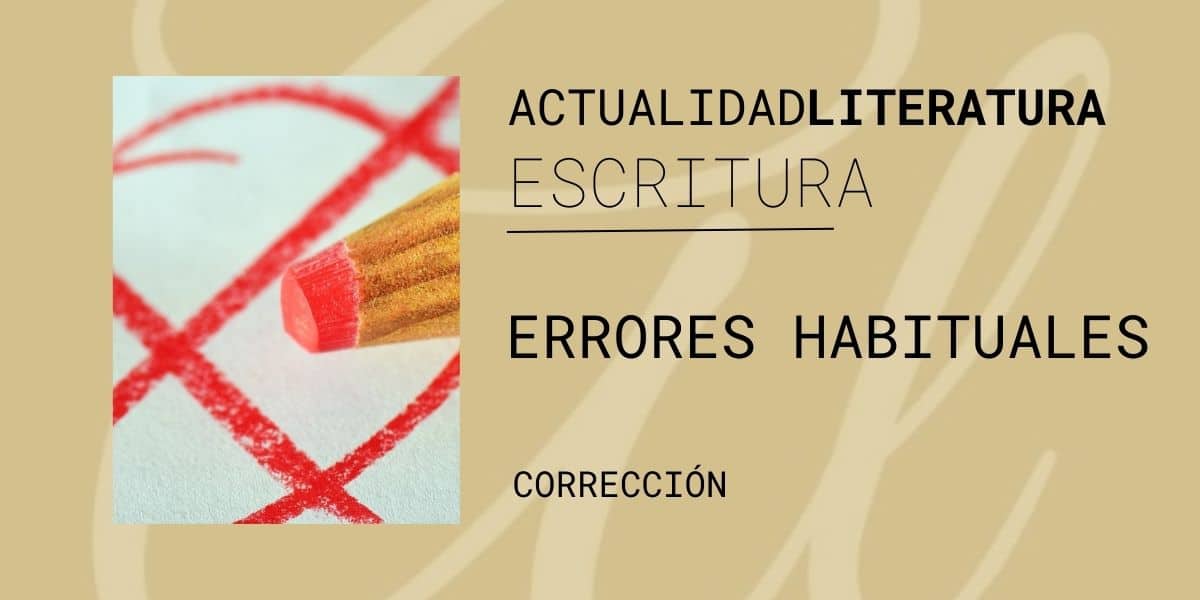
This is a topic article that I will surely share with several colleagues correctors. We have been in this for several years and possibly we coincide in the errors what do we see in texts of various kinds and, above all, in correction literary. I have selected the 8 most common that I find I encourage writers, bloggers, and copywriters to keep them in mind when questions arise and try to avoid them. And it's always good to have on hand manuals or books and consultation sites (Spelling and Grammar of the RAE or any other) to clear them.
8 common mistakes
Uses of upper and lower case letters
A very common error that is given by the many uses that are and that sometimes they are diffuse or depend on the context. That is why you have to take a look from time to time if you are not sure which one is the most suitable.
Diacritical accents
This is a classic that the automatic spell checkers of the different word processors usually do not distinguish well or, sometimes, suggest the alternative that is not. Examples of diacritical accents are: I/I know, you/you, he/he, yes/yes, mate/maté, more/more, you/te, of/give, knew/knew, you/you, sing/sang, etc.
vocative commas
It is also a common mistake to forget them and, of course, in informal contexts, such as text messages, etc., they are always conspicuous by their absence. Examples: Maria, I told you to come / Hello, Luis, how are you?
Leísmo, laísmo and loísmo
They are also classic mistakes.
El leism is use of le/les as a direct object (instead of lo/los and la/las). He secularism is the use of la/las as an indirect object (instead of him/them). And the loism occurs when used lo/los as indirect object (instead of him/them).
I saw a car ("a car" is the direct object)
—I saw him (instead of I saw him). Example of leism.
I told Marta to come ("a Marta" is the indirect object)
"I told her to come over." Example of secularism.
I gave an envelope to Marta ("to Marta" is the indirect object)
—I gave him an envelope (instead of I gave him an envelope). Example of loísmo
- A case of legalism allowed is what affects the third person masculine, but only in the singular. For example: uterine
Juan greeted Pedro ("a Pedro" is the direct object).
greeted him / greeted him
- Another exception is the "courtesy leism":
I greeted (you) / I greeted (you)
adequeísmos
these are mistakes general and constant, perhaps by listening to them daily on radio and television and to many of our distinguished politicians. But they have been infected all areas and, perhaps, we will end up forgetting the preposition «of». However, the correct is:
I am sure/convinced/realize THAT
incorrect gerunds
Another use that involves more errors is gerunds. They are of three kinds:
- Afterwards
Although we can find numerous examples of this use in classical texts, today the use of the gerund is considered incorrect when it only introduces a temporary succession. So it is recommended to look for other alternatives.
He bought stamps, stamping them later on the envelopes he had to send.
- specific
In this gallicism. The gerund acts as a specifying adjective or an adjectival subordinate clause. In most cases it should be replaced by que + verb in the personal form.
The law has been modified penalizing animal abuse. > The law penalizing animal abuse has been modified.
We have read a poster announcing a strike. > We have read a poster announcing a strike.
only allowed two specific gerunds: boiling and burning. "We'll need a pot of boiling water"; "She was burned by a burning candle."
- Partitive
This incorrect use of the gerund is used to make a precision about a subset or part of a whole:
They saw three ships sail past, two of them very large.
It is advisable to delete the gerund and introduce a partitive expression with a relative pronoun (among which or which / of which), and convert the verb to be or to be in a personal form:
They saw three ships sail by, two of which were very large.
Agreements (number and time)
also occur in all areas and quite often. The explanation may be when using complex structures with two or more subjects or subordinate clauses, and if the text is not reviewed afterwards. They are errors of agreement of number, gender or both between the subject and the verb or between the direct object and its predicative object. Also between a noun and the adjective or a participle, and between the relative and its antecedent.
dialogue punctuation
La great pending subject of the majority of the authors. I agree that it is usually difficult, but the best way to learn is by writing them and, above all, reading. There are many examples and they would need a separate article. But I will end with a fundamental note: to introduce a dialogue use the dash (—), not the hyphen (-) and never the bullets.